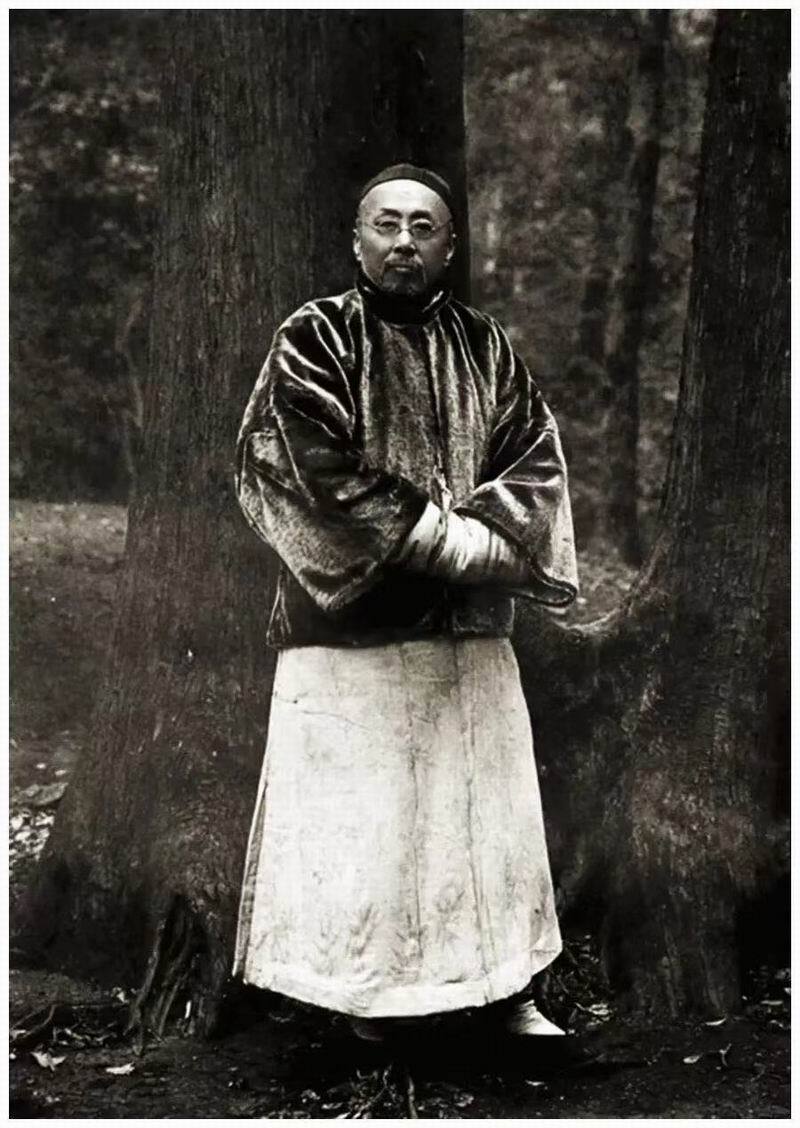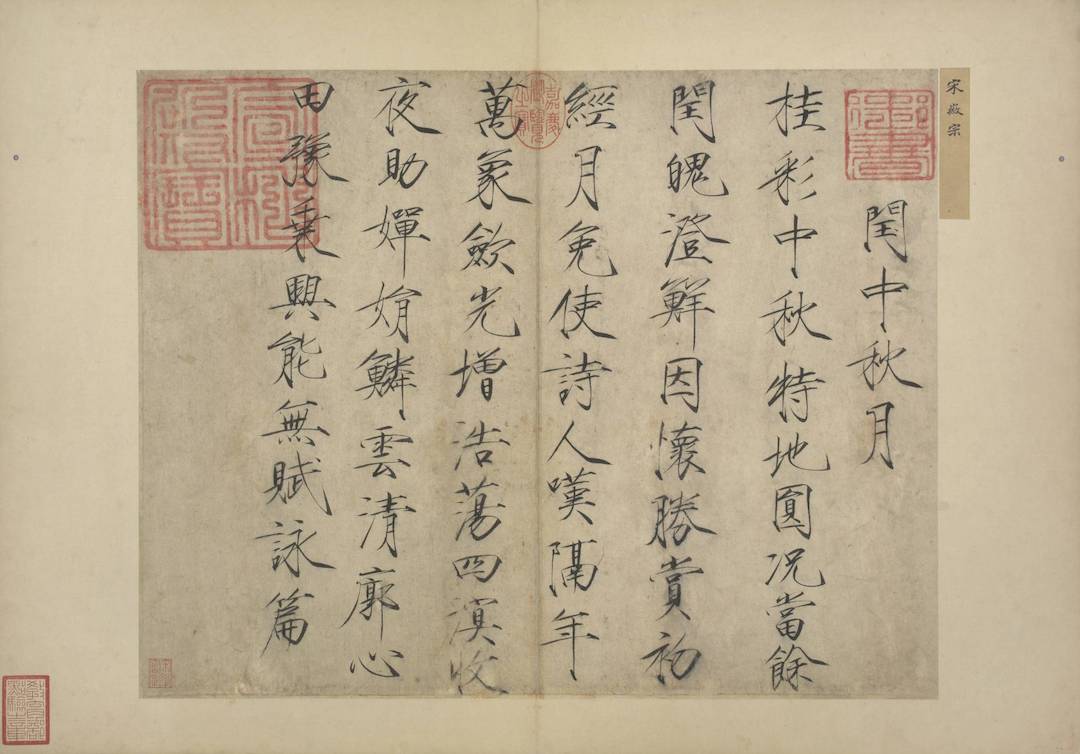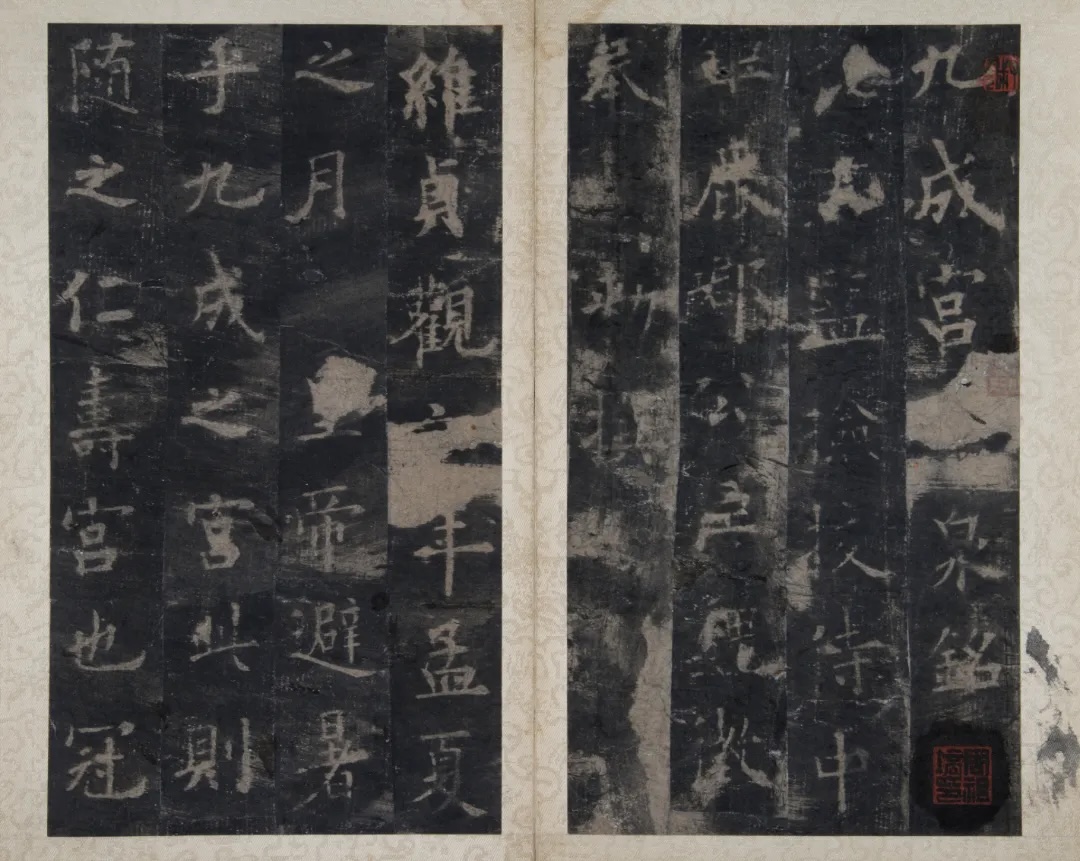
2025 marks the 160th anniversary of the birth of the great artist Huang Binhong (1865-1955). On April 29, the "Heaven, Earth and Man - Art Exhibition in Memory of the 160th Anniversary of Huang Binhong's Birth" was exhibited in the Zhijiang District of Zhejiang Museum. Zhejiang Museum is the state-owned collection institution with the largest collection of Huang Binhong's paintings and collections, with a total of more than 10,000 pieces. This exhibition covers Huang Binhong's classic works, precious drawings, manuscripts and his collection of antiques, totaling more than 160 pieces (sets), which can be regarded as a concentrated display of all the fine works of Huang Binhong's collection in Zhejiang Museum.
The organizers said, "The current significance of commemorating Huang Binhong is not only to review the life of this great artist, but also to respond to the call of the times for cultural confidence, artistic innovation and national spirit through the display of his artistic thoughts and cultural heritage, and to provide profound inspiration for promoting mutual learning among civilizations."

Exhibition site
The research and display are a tribute to Mr. Bin's selfless kindness
"Everything except the kitchen can be taken away". In 1955, after Mr. Huang Binhong passed away, his wife Song Ruoying and his children followed his will and donated all his paintings and calligraphy and cultural relics to the country, which were preserved by the Zhejiang Provincial Museum. The donated collections totaled more than 10,000 pieces, including more than 5,000 paintings and calligraphy, more than 1,000 ancient and modern paintings and calligraphy, nearly 900 ancient seals, nearly 500 copper, porcelain, jade and other cultural relics, about 2,000 kinds of inscriptions and books, and "a wooden box" of manuscripts and letters. This is the largest and most complete donation in China so far.
In addition to more than 10,000 works and collections donated by Huang Binhong, the Zhejiang Provincial Museum also has some of Huang Binhong's early works obtained from the Anhui Provincial Museum. It is currently the institution with the richest collection of Huang Binhong's works in China. Over the years, in addition to the permanent exhibition "The Greatest Painting - Huang Binhong's Art Life Exhibition" at the Huang Binhong Art Museum in Gushan District, the Zhejiang Museum has also held many Huang Binhong special exhibitions to deeply explore the value of Huang Binhong's artistic heritage and study and promote Huang Binhong's artistic achievements.

Huang Binhong sketching at Feilai Peak in Lingyin, Hangzhou in 1954
On April 29, Huang Binhong's relatives, including Huang Gaorang and Huang Jiannian, the grandsons of Huang Binhong, gathered at the Zhejiang Museum to commemorate the 160th anniversary of Huang Binhong's birth. Huang Jiannian, the youngest grandson of Huang Binhong, is also a photography artist. During the same period, he exhibited nearly 100 flower and bird art photography works at the Zhejiang Museum. Talking about the influence of his grandfather on his artistic career, Huang Jiannian said that he was only two years old when his grandfather passed away and had no direct memory of his grandfather. "Although I was not able to directly inherit my grandfather's pursuit of the world of brush and ink, and I didn't pick up a brush but a camera, in fact, the descendants of the Huang family are all able to 'print'." Huang Jiannian said, "We don't have to deliberately imitate anyone's work or pursue brush and ink techniques. What's important is to follow the footsteps of our ancestors and learn their spirit and attitude towards artistic creation and life. This is crucial."

Huang Binhong's On Heaven, Earth and Man, Collection of Zhejiang Provincial Museum
What are we commemorating when we commemorate Huang Binhong?
The Zhejiang Museum said, "The current significance of commemorating Huang Binhong is not only to review the life of this great artist, but also to respond to the call of the times for cultural confidence, artistic innovation and national spirit through the display of his artistic thoughts and cultural heritage, and to provide profound inspiration for promoting mutual learning among civilizations."

Huang Binhong's Daylily Scroll, Collection of Zhejiang Provincial Museum
Qixia Mountain and the "Old Painter of West Lake"
Huang Binhong's paintings depict mountains and rivers, lush vegetation, flowing water and blooming flowers, which are full of vitality. His paintings fully demonstrate his attainments and achievements in poetry, calligraphy, epigraphy, art history and appreciation. As Xu Jiang, Vice Chairman of the China Federation of Literary and Art Circles and President of the Chinese Oil Painting Society, said at the opening ceremony, "Mr. Huang Binhong is the last master of traditional Chinese landscape painting. His rich creations are full of poetic oriental aesthetics."

Huang Binhong's Landscape Painting Scroll, 1952, Collection of Zhejiang Provincial Museum
Huang Binhong's ancestral home is She County, Anhui Province, and he was born in Jinhua, Zhejiang Province. In order to prepare for the exam, Huang Binhong traveled back and forth between the two places when he was young, and he also went to Nanjing and Yangzhou Academy to study. Later, due to the difficult family situation, the family moved back to She County, and Huang Binhong lived in the countryside to handle family affairs and teach in public schools. In 1907, Huang Binhong supported the revolution and minted coins privately, so he fled to Shanghai and served as the editor of newspapers and magazines such as "Shenzhou Guoguang Collection", "Guocui Journal", and "Art Weekly", and taught in many art colleges. In 1937, Huang Binhong was invited by the Beijing Art College to teach in the north, but he stayed there for more than ten years due to the Marco Polo Bridge Incident. It was not until 1948 that Huang Binhong returned to Shanghai and later settled in Hangzhou, teaching at the National Art College (now China Academy of Art). In March 1955, Huang Binhong died of illness in Hangzhou.

Peach Blossom Stream, Collection of Zhejiang Provincial Museum
Huang Binhong spent the last few years of his life in Hangzhou. When he first came to Hangzhou, he lived in the dormitory of the Art College at No. 19, Qixialing, next to the Yue Fei Temple. In the spring of 1952, Huang Binhong and his family moved to No. 32, Qixialing (the current house number has been changed to No. 31). "I wish to be an old painter of West Lake", is Huang Binhong's wish. Therefore, during his stay in Hangzhou, Huang Binhong often sketched the scenery of the lake and mountains near West Lake and made a large number of sketches. "In his later years, Mr. Bin painted a lot of paintings in Qixialing, and also painted a lot of paintings about Qixialing." Liu Cong, curator of this exhibition and curator of the calligraphy and painting department of Zhejiang Provincial Museum, said.

Xiling Freehand Painting, Collection of Zhejiang Provincial Museum
Among the paintings on display, "Misty Rain on the Creek Bridge" was a sketch by Huang Binhong at the West Lake, "looking at the northern peaks from Qixia Mountain in the morning"; "Peach Blossom Creek" is the old Peach Blossom Creek at the foot of Qixia Mountain, which is probably difficult to recognize now; "Xiling Freehand" was written the year before Binhong's death, "the night rain has just stopped, the morning mist has not yet cleared, and the northern and southern peaks are visible from the Xiling Bridge"...

A hand-drawn drawing of No. 31 Qixialing in the exhibition design, the former residence where Huang Binhong lived in his later years, and the current Huang Binhong Memorial Hall
On the exhibition wall at the entrance of the exhibition hall, there is a photo showing an old man with a thick beard and white eyebrows painting at his desk. This is a scene of Huang Binhong painting at his residence in Qixialing, West Lake, Hangzhou around 1950, showing the world that Mr. Binhong was still painting in his later years.

Huang Binhong lived in Xixialing, West Lake, Hangzhou around 1950
No. 31 Qixialing, the former residence where Huang Binhong lived in his later years, is now the Huang Binhong Memorial Hall. "I hope that after viewing Huang Binhong's paintings, the audience can go to No. 31 Qixialing to see the environment around Binhong's former residence. Standing on the small building of the former residence and looking at the distant mountains outside, you can probably understand why he had such mountains and rivers in his mind."
A concentrated display of Huang Binhong's collection of fine works
The Paper saw at the scene that the exhibition is divided into five units: "Inner Beauty of Painting and Calligraphy", "Common Sense of Ancient and Modern Times", "Following the Vitality of Heaven and Earth", "Viewing the Treasures of the World", and "Understanding the Vitality of All Things", covering the representative works of Huang Binhong's artistic creation in various periods, showing his rich artistic creation. The exhibits run through his entire artistic career. The earliest work on display is "Wild Path and Sparse Branches" created in 1901. At that time, he had not yet fled to Shanghai and was still in the period of learning painting, outside the literary and artistic wave in Shanghai; there is also his last work created in 1955 - "Huangshan Tangkou", which is also the only exhibit in this exhibition that was borrowed from a private person. It was sold at a high price by China Guardian in 2017. It is recognized as a rare large-scale masterpiece among Huang Binhong's works. The painting is vigorous and shows his mature skills.

Huangshan Tangkou Private Collection 1955

Huang Binhong's Burnt-Ink Landscape Scroll, Collection of Zhejiang Provincial Museum
Liu Cong introduced that the permanent exhibition "Huang Binhong's Art Life Exhibition" originally located in the Huang Binhong Memorial Hall in Gushan Museum, due to space limitations, the number of Huang Binhong's paintings on display was also very limited, but the exhibition would be changed several times a year, and each time some fine works would be selected for display. This exhibition is equivalent to a concentrated display of all the fine works in the Huang Binhong Collection of Zhejiang Museum. It is worth mentioning that the first unit of the exhibition uses 34 works to condense Huang Binhong's life of artistic reform. The exhibits selected in this part are all works with clear dates in the Zhejiang Museum's collection, which can be used as standard pieces for judging the dates of Huang Binhong's works.

Huang Binhong's Landscape Scroll, Collection of Zhejiang Provincial Museum
"In the past, there have been many studies and conclusive opinions on Huang Binhong in the academic community, such as the 'White Binhong' period, the 'Black Binhong' period, and the 'Ninety Reforms'. Many of them are definitions of Huang Binhong's art by later generations based on their own understanding. This exhibition hopes to show the full picture of Huang Binhong's art through his paintings, allowing the audience to feel for themselves, and feel the evolution of his painting style, his preferences and artistic views." Liu Cong said.

Huang Binhong's painting in the style of Song Dynasty, collection of Zhejiang Provincial Museum
The exploration of the writing behind "Night Mountain" and "Rainy Mountain"
In this exhibition, visitors can take a look at Huang Binhong's "Sitting in the Rain at Qingcheng" created in 1932. The creation story behind this work is widely circulated in the art world. It is also one of Huang Binhong's representative works in the collection of Zhejiang Museum, reflecting Huang Binhong's exploration of brush and ink in the process of learning from nature.

Huang Binhong Qingcheng Sitting in the Rain Scroll Collection of Zhejiang Provincial Museum
In 1932, Huang Binhong went to Sichuan to sketch. It was early spring, and he went to Qingcheng Mountain for sightseeing. It was suddenly raining heavily. At this time, he suddenly saw many waterfalls hanging on the cliff opposite. Although it was raining heavily, the old man still chose a flat rock and sat down to enjoy it. At this time, the sound of wind, rain, water, and pine trees were mixed around him. While watching the thousand-foot flowing spring, the old man proudly chanted a poem: "The ink splashed on the mountain is far and near, and the Zhu family has thousands of difficulties. Sitting in the rain in Qingcheng is great, and only when I entered Sichuan can I know the rich painting meaning." At that time, he seemed to be soaked in a pool of water. Not only was the sketchbook he brought soaked, but even the dry food he brought turned into "powder paste". The old man felt that he seemed to be the only one in the world who enjoyed the wonderful rain scene of this famous mountain. The next morning, he lied to his friend that he was not feeling well, but in fact he was "pretending to sleep under the quilt and making a draft in his mind". He wanted to experience what he saw in the rain carefully, and then find out the rules of painting from it. After lying down for half a day, he got up, put on his clothes, ground ink and spread out paper, and finished more than ten pieces of "Qingcheng Misty Rain" in one go. Some of them were splashed ink, some were burnt ink, and some were dry and cracked with colored ink. Later, he summarized these experiences in "Painting Jialing Landscape", writing: "Where did I get the powder model? The rain fell on the wall and the wall moved day by day." Regarding this "rain fell on the wall", he once explained in a letter: "Qingcheng was raining heavily, and I sat in the mountains for three hours. Thousands of flying springs made me suddenly realize that if the rain fell on the wall, it would be dry and moist, moist and visible, the ink would not hinder the color, and the color would not hinder the ink." It can be seen that he learned the changes in the color of brush and ink from nature.
"Huang Binhong was obsessed with the two colors between heaven and earth. He repeatedly observed and painted the mountains in the morning, at dusk, and in the rain. More than ten paintings such as "Qingcheng Sitting in the Rain" and "Qingcheng Misty Rain Album" are representative works of this period. He used all his skills to conduct bold experiments in brush and ink."

"Misty Rain over Creek Bridge" Collection of Zhejiang Provincial Museum
Liu Cong told the reporter of The Paper that she particularly likes the "Night Mountain" and "Rainy Mountain" sections of the exhibition, following the style of "Sitting in the Rain at Qingcheng". Among the four works on display in this section, "Misty Rain over the Creek Bridge" was written by Huang Binhong when he was "looking at the northern peak of Qixia Mountain at dawn" by the West Lake. "The misty and hazy feeling of water vapor in the picture can be directly felt by the viewer." Huang Binhong painted many paintings on the same Qixia Mountain theme, "and the misty texture conveyed by this picture can evoke similar memories of people walking on the Broken Bridge and Su Causeway by the West Lake on a misty day."

"Night Mountain" Collection of Zhejiang Provincial Museum
On another painting titled "Night Mountain", Huang Binhong signed: "Huang Dachi hides his brush in ink, Ni Yu hides his ink in his old brush, which is exactly the rich and rich style of the Northern Song Dynasty, with layers of depth, like the beauty of walking in the night mountain. Ni and Huang are extremely capable of this. In the year of Renchen, Binhong was eighty-nine years old."

Huang Binhong's Mountain Landscape Scroll, Zhejiang Provincial Museum
Walking to the painting “Mixed Mountain Colors”, the exhibition was almost over. This work, which has neither a signature nor a seal, is one of Huang Binhong’s representative works in the collection of the Zhejiang Museum. “In this work, he integrated the relationships between time and space, primary and secondary, black and white, dots and lines, dryness and wetness, thick and thin, and reshaped the painting language in the unity of opposites, moving towards a unified state.”
The exhibition will run until June 8th.
- NCOWgmRQlqJIuxy04/30/2025


